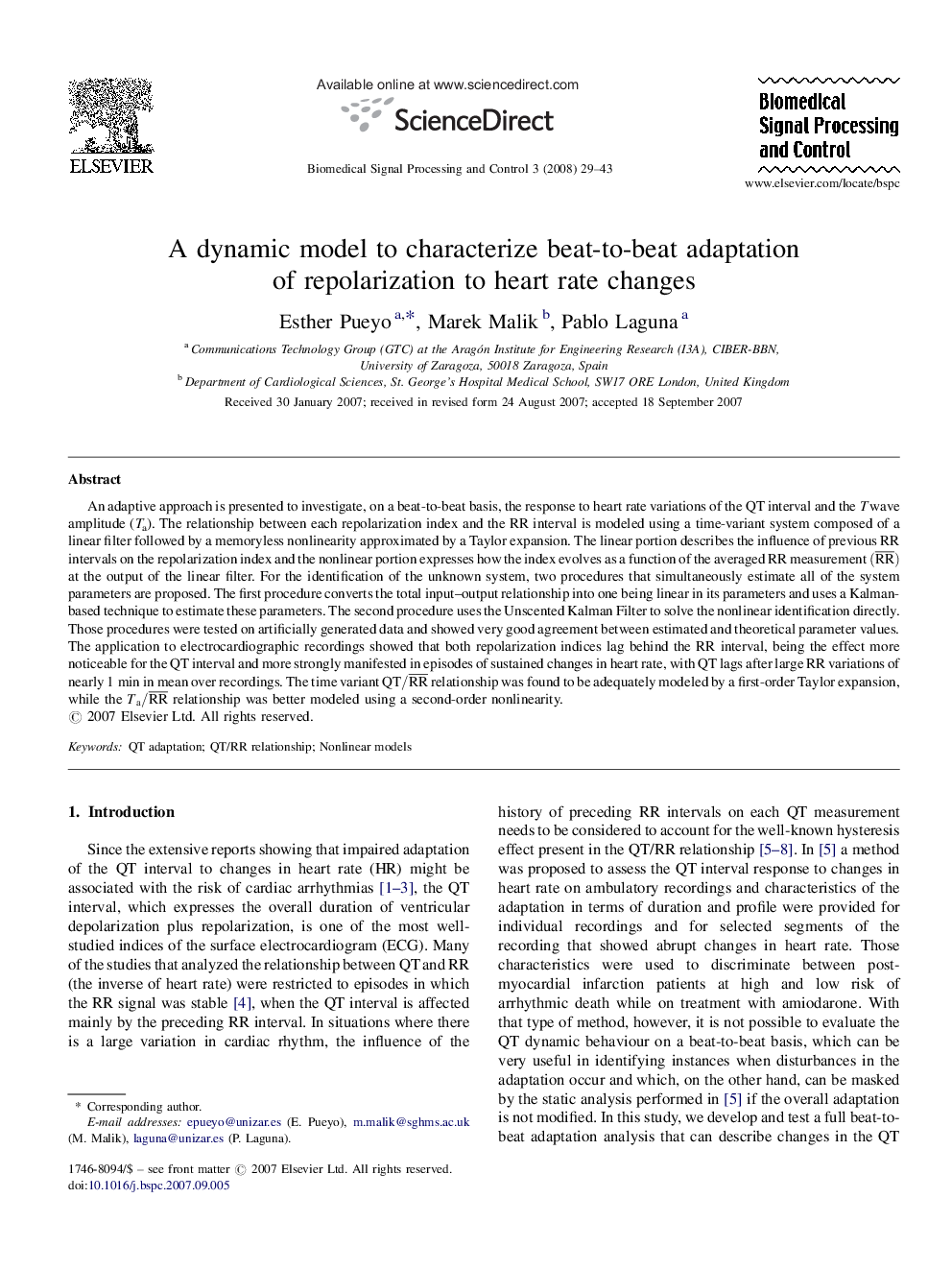| Article ID | Journal | Published Year | Pages | File Type |
|---|---|---|---|---|
| 558306 | Biomedical Signal Processing and Control | 2008 | 15 Pages |
An adaptive approach is presented to investigate, on a beat-to-beat basis, the response to heart rate variations of the QT interval and the T wave amplitude (Ta). The relationship between each repolarization index and the RR interval is modeled using a time-variant system composed of a linear filter followed by a memoryless nonlinearity approximated by a Taylor expansion. The linear portion describes the influence of previous RR intervals on the repolarization index and the nonlinear portion expresses how the index evolves as a function of the averaged RR measurement (RR¯) at the output of the linear filter. For the identification of the unknown system, two procedures that simultaneously estimate all of the system parameters are proposed. The first procedure converts the total input–output relationship into one being linear in its parameters and uses a Kalman-based technique to estimate these parameters. The second procedure uses the Unscented Kalman Filter to solve the nonlinear identification directly. Those procedures were tested on artificially generated data and showed very good agreement between estimated and theoretical parameter values. The application to electrocardiographic recordings showed that both repolarization indices lag behind the RR interval, being the effect more noticeable for the QT interval and more strongly manifested in episodes of sustained changes in heart rate, with QT lags after large RR variations of nearly 1 min in mean over recordings. The time variant QT/RR¯ relationship was found to be adequately modeled by a first-order Taylor expansion, while the Ta/RR¯ relationship was better modeled using a second-order nonlinearity.
